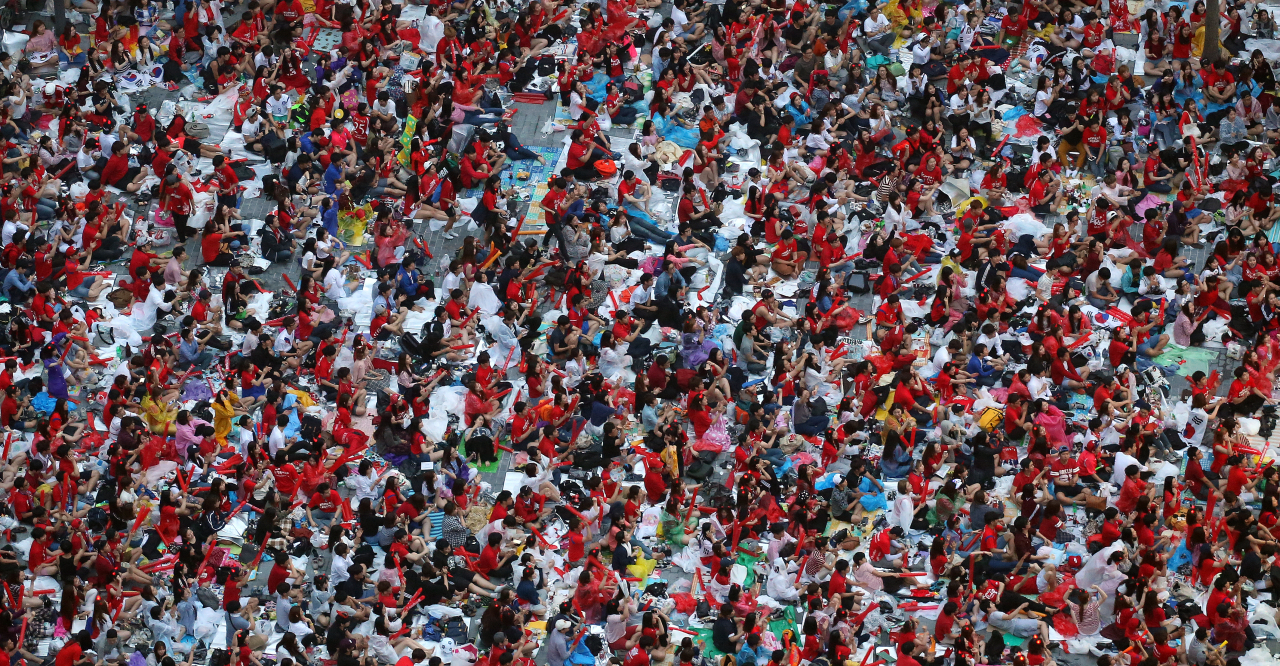Itaewon disaster forces bitter reckoning over crowd safety in S. Korea
Complacency cost innocent young lives despite Korea's proven record of orderly massive gatherings
By Park Han-naPublished : Nov. 1, 2022 - 18:09

Attending political rallies or other events where tens of thousands of people gather has not typically meant risking your life in South Korea. From massive street protests on weekends to rush hour commutes on the subway, encounters with highly crowded places were almost like part of everyday life.
But Saturday’s tragedy in Seoul’s popular nightlife district of Itaewon forces a bitter reckoning over the perils of complacency around crowded spaces in South Korea.
“Even with all the news about how people died in a crowd crush in Itaewon, I have to ride crowded --- often way too crowded -- subway trains on my commute. It gives me chills to think how dangerous crowds can be,” said Cho Min-hyung, an office worker in his 40s.
The Halloween disaster -- which had claimed 156 lives as of Tuesday -- is a clear failure of crowd management, many experts and critics say.
Ironically, this country had taken pride in orderly mass gatherings and crowd management in previous years.
In 2002, when South Korea co-hosted the FIFA World Cup with Japan, some 13.2 million people, or 30 percent of the country’s population, participated in mass street cheering events in front of Seoul City Hall and the Gwanghwamun intersection as the national team made it to the semifinals for the first time in more than 20 years.
Some 30 people fainted when a Korean player scored the decisive goal against Japan in the penalty shootout in the heat wave of June. But injuries or deaths from a crowd crush were unimaginable.
During one of the biggest international sporting events, Korean security officials mobilized extensive resources, including nearly 290,000 police officers and security guards with over 310,000 pieces of safety equipment, including metal detectors, to prevent terrorism and hooliganism.
Between October 2016 and April 2017, 23 candlelight protests were held each weekend to oust former President Park Geun-hye from office over an influence-peddling scandal.
Some 17 million people participated in the candlelight rallies. Although it was a highly sensitive political protest, no significant brawls or injuries were reported. The protests were praised by international media for how peaceful demonstrations can be, even with so many participants.
But experts said the Halloween tragedy in Itaewon had different characteristics from the other events mentioned above.
Because the Halloween celebration was a night out for partygoers without an organizer, an insufficient number of security personnel had been deployed, and the local government seemed to have neglected safety issues, said professor Gong Ha-seong of the Department of Fire and Disaster Prevention at Woosuk University.
“If it is an official festival or event, it could have been reported to the relevant authorities in advance. Then the authorities will arrange a safety check in advance by the local government, firefighters, police and safety personnel on the day of the festival,” he said.
Unlike other flat, open spaces like Gwanghwamun Square, Itaewon has narrow alleys and slopes, he noted. “A major accident like this has never happened before (in Korea), but when it comes to safety disasters, you never know when it will happen,” he said.
He recommended that people avoid overcrowded places. “I think that it would be safe to leave the place immediately if you can’t secure enough walking space to the point where you are being pushed by others.”
Chae Jin, a fire protection engineering professor at Mokwon University, pointed out such a terrible situation would not have happened if administrative agencies paid enough attention to controlling the crowd and deploying event facilitators and security guards.








![[Graphic News] More Koreans say they plan long-distance trips this year](http://res.heraldm.com/phpwas/restmb_idxmake.php?idx=644&simg=/content/image/2024/04/17/20240417050828_0.gif&u=)
![[KH Explains] Hyundai's full hybrid edge to pay off amid slow transition to pure EVs](http://res.heraldm.com/phpwas/restmb_idxmake.php?idx=644&simg=/content/image/2024/04/18/20240418050645_0.jpg&u=20240419100350)






![[From the Scene] Monks, Buddhists hail return of remains of Buddhas](http://res.heraldm.com/phpwas/restmb_idxmake.php?idx=652&simg=/content/image/2024/04/19/20240419050617_0.jpg&u=20240419175937)

![[KH Explains] Hyundai's full hybrid edge to pay off amid slow transition to pure EVs](http://res.heraldm.com/phpwas/restmb_idxmake.php?idx=652&simg=/content/image/2024/04/18/20240418050645_0.jpg&u=20240419100350)

![[Today’s K-pop] Illit drops debut single remix](http://res.heraldm.com/phpwas/restmb_idxmake.php?idx=642&simg=/content/image/2024/04/19/20240419050612_0.jpg&u=)